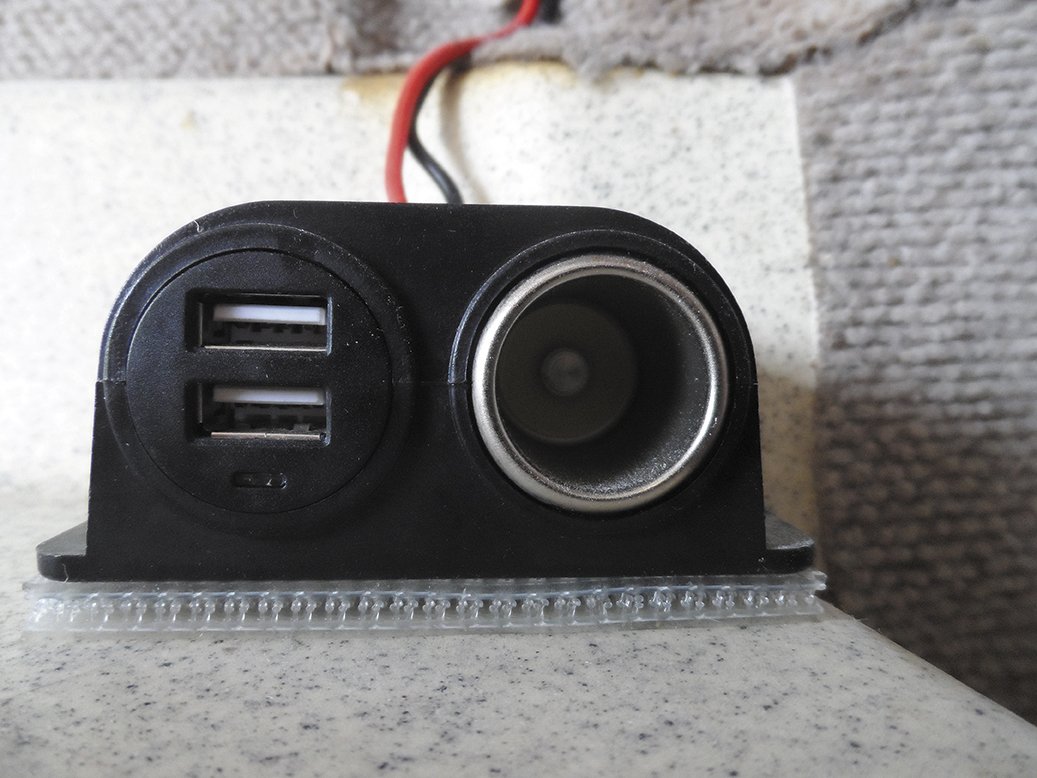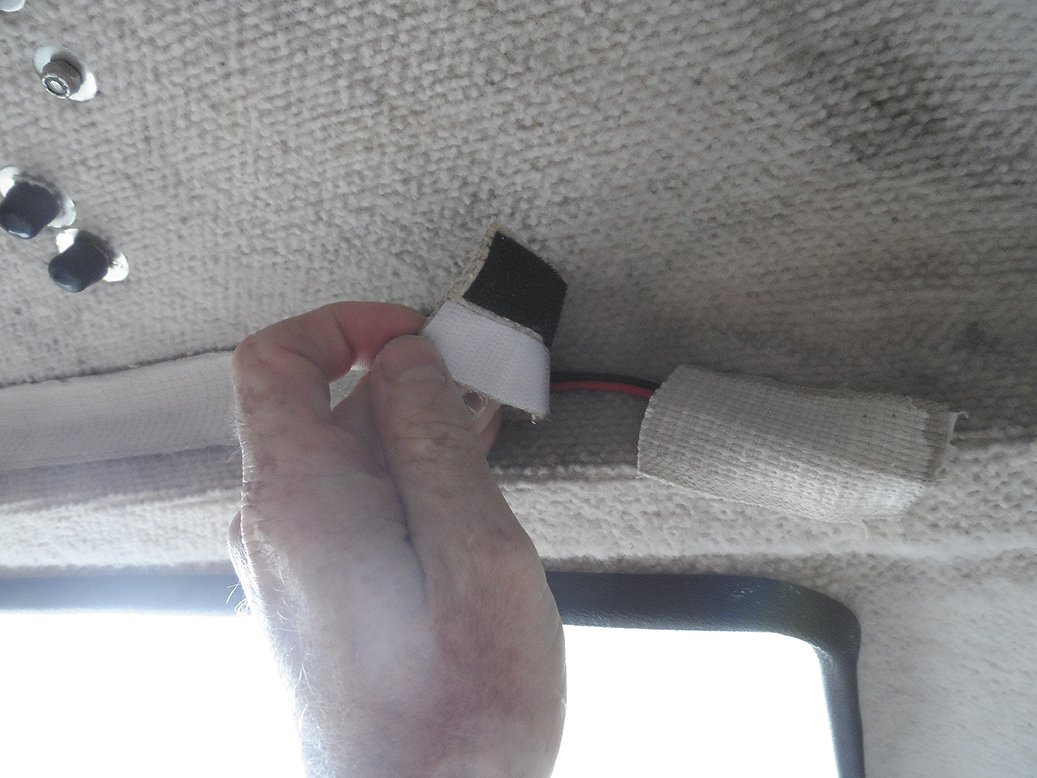Hook and loop fasteners are familiar from jacket cuffs and companionway bug screens, but during our many years of fiddling around boats, we’ve come up with a few applications that even a Velcro-lover haven’t yet tried. Let’s look at some new tricks.
Clew strap. In the August 2019 issue of Practical Sailor we look at making your own clew strap. A less common application is holding the mainsail tack tight to the mast when reefed. Typical slab reefing systems are good at pulling the sail down, but the outhaul is sheeted hard in a strong wind, the bolt rope or sliders can be pulled right out of the track. Again, a double-sided Velcro strap is fast and strong. At least 6 inches of Velcro for each 100 square feet of sail area and at least two full wraps around the boom.

Reducing friction. Sailors use non-skid material under plates and mugs to keep them from landing on the floor. But sometimes you want an item to slide. One of our favorite uses for Velcro is under the clew strap for the main sail. Webbing on aluminum is reasonably slick, but by applying the fuzzy side of self-adhesive Velcro to the underside of the webbing and coating the boom with Sailkote, outhaul adjustments are easy. This also works on the bottoms of drawers.
DIY fiberglass window covers. The concept is simple enough. Cut 0.9-inch fiberglass shower surround material (any home improvement center sells 4-by-8 sheets) to the outline of the window and attach with Velcro. The problem is, when you try to remove the cover, the glazing may come loose when you pull the cover off (yes, it happened to us). The solution is to attach the cover with buttons covered with a variation on Velcro marketed by 3M under the names Dual Lock and Extreme Releasable Fasteners. Instead of little fabric hooks, the working parts are tiny molded mushrooms that interlock with an audible snap when pressed together. To remove, lever the buttons off using your fingertips rather than by pulling straight out. For details, read DIY Fiberglass Hatch Covers, PS March 2016.

Fastening light hardware. Using the same high-grip adhesive as 3M High Bonding Tape, Dual Lock is much easier to remove, because you can pop the object loose first, providing direct access to the adhesive strip (sometimes a screwdriver may be helpful-its strong stuff). Because the backing tape is very strong, you can work a knife under one corner and remove the Dual Lock without leaving any residue behind. However, although it is strong, the adhesive may creep under sustained load in warm temperatures. Follow the manufacturers guidance regarding weight and load limits.

Wiring covers. Hiding wires is always a challenge. You may need to drop the ceiling, drill holes, scrape, glue, or perform extreme boat yoga, all for the sake of appearance. However, if the cabin in question is carpeted, you can hide them in plain sight while maintaining instant access. Cut strips of the carpet or matching fabric about one inches wide. Hot knife the edges to prevent fraying. For more color variety, try a cotton towel, but use varnish at the edges (a hot knife wont work here). Lightly coat one side with contact cement or 3M Super 77 spray adhesive. This will allow self-adhesive Velcro to bond permanently. These hider strips will stick to the carpet liner, securing the wires in an accessible and chafe-free manner. So long as wires are run along natural corners, they are unobtrusive.
Screens. Everyone does this. Stick Velcro around the companionway and slap a screen on. But we always wonder, if the screen is installed from the outside, how do you close it from the inside? If you have a carpet-lined cabin, there is a super-simple solution. Cut screen material 3-5 inches larger than needed. Slap the Velcro hook on one side and loops on the other. When used alone, neither strip sticks well to the screen. However, when paired together, the adhesive sticks to the other tape through the holes, bonding to itself like duct tape in a tangle. Offset the corners in opposite directions for strength, just as bricks are offset. Roll them up for storage. The Velcro on both sides makes for a nice neat bundle.
Tiller pilot holder. The last time we had a tiller pilot, like many sailors, we attached a length of cord and a snap hook to make sure it didn’t go for a swim. We recently tried multiple wraps of Velcro, and found it provided more support, reducing bouncing in waves.
You can also do the same for your $15 do-it-yourself tiller lock described in the April 2023 issue.
Mounting pictures. Got kids? They are naturally inclined to decorate their space. If a carpet-lined berth is to be theirs, give them some Velcro stick-on dots and let them go to work. The hook part will stick to the carpet, yet is easily removed without damage. Sailing is more fun when the kids are left to play on their own.

We’d love to hear of other uses we haven’t yet thought of. Give us your suggestions in the comment box below, or by email at practicalsailor@belvoir.com.
For specific product information and review of properties, read Getting a Grip on Velcro, PS April 2016.
PS Technical Editor Drew Frye is the author of “Rigging Modern Anchors.” (2018, Seaworthy Publications). He blogs at www.sail-delmarva.blogspot.com.





































With limited success, using lengthy strips of Velcro, I`ve tried to secure the underside of a pair of forever migrating long rectangular saloon cushions to their port and starboard benches, supplementing the insufficient OEM Velcro patches. I`ve had more success using a grid of Velcro strips to secure my DIY helmsman`s cushion (foam padding over a plywood base) to the portable molded fiberglass seat insert. I remove the insert/cushion at haulout (on the hard) because winter freeze-and-thaw conditions are tough on the Velcro`s integrity.
Little strips or dots of the soft side (loop) velcro can tame a rattling locker door.